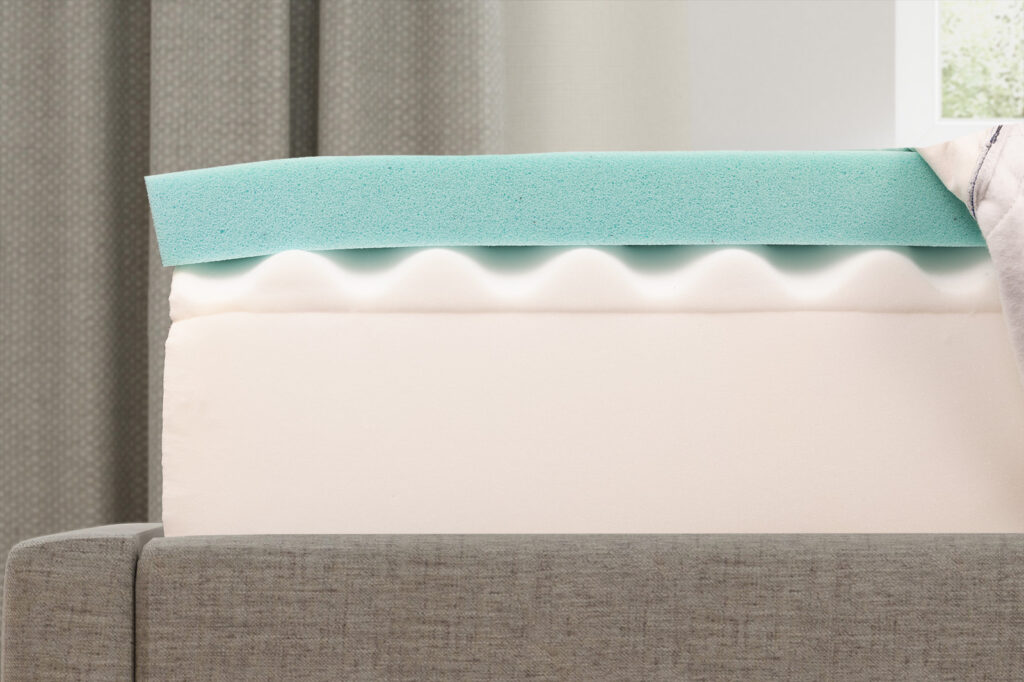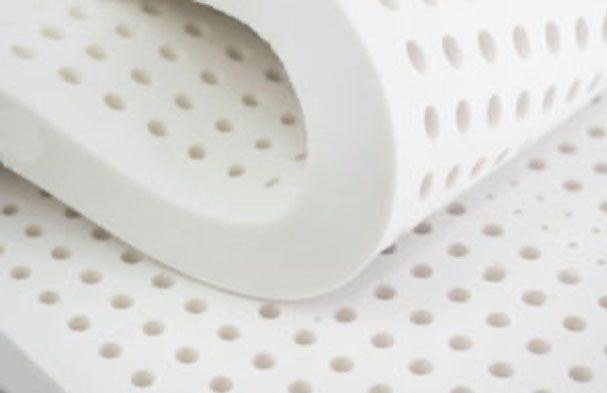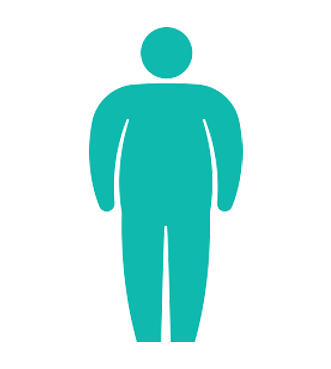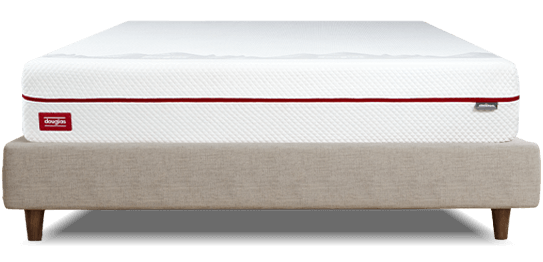How to Choose a Mattress in 5 Easy Steps (2025)
Updated: October 7, 2025 | Published: August 12, 2025Choosing the right mattress can be a confusing, expensive, and time-consuming process. It’s a decision that requires careful consideration and research, especially when you consider that a new mattress is a long-term investment in something incredibly important: your sleep.
If you didn’t already know that there are hundreds of mattress brands to choose from, chances are it didn’t take long for this overwhelming fact to become apparent. You have probably also seen at least three mattress ads today on Facebook or Google, on top of all the banner ads following you around on your favourite news, entertainment, or sports websites.
The ability to choose between hundreds of mattresses from the comfort of your own home is great; however, you should always ask yourself the following questions before pulling out your credit card in-store or clicking “Add to Cart” on your computer.
Step 1: Do I really need to buy a new mattress?
Before diving into the world of mattress reviews and comparisons, it’s worth taking a moment to ask: Do I need a new one?
If your current mattress is sagging, lumpy, or leaving you sore or tired in the morning, it’s likely time for an upgrade. If it’s still supportive, and you’re sleeping well, you might be okay holding off. Once you’re ready, most of the research can be done from home, and the upside of buying online is that many brands offer a sleep trial – typically around 100 to 365 nights – so you can test your new mattress risk-free in the comfort of your home.
With so much information available online, you can start your research from the comfort of your own home. First, find a mattress that suits your body, your sleeping position, and your budget. Best of all, if you find one you like from an online mattress company, chances are it comes with a sleep trial. Why is that so important? Because if you decide it isn’t right for you, you can have the mattress picked up, get all of your money refunded, and now you can try the next one on your list. Sounds easier than haggling with a commission salesperson, eh?
READ MORE: Buying a Mattress Online vs In-Store
Step 2: How much should I spend on a new mattress?
One of our editors here at Mattress-Reviews.com visited a local department store in search of a new mattress. Never mind the pressure from pushy sales people, it was the prices alone that caught his attention! One thing is for sure: a mattress should not cost more than $2,000. He said roughly 80% of the mattresses at this location exceeded that price, many by a considerable margin.
You don’t have to spend thousands for a good night’s sleep. Quality mattresses are available at far more accessible price points. Here are some helpful hints:
- If you’re on a tight budget, you might find some options under $500 for a Queen size. However, many mattresses in this range are often made with lower-quality materials, manufactured in China, and may wear out faster. Our recommendation for a mattress in this price range is Juno.
- Many high-quality mattresses are available from $800 to $1,400 dollars, like Douglas, our top pick. You’ll find well-made foam and hybrid mattresses in this price range.
- When considering foam or hybrid mattresses, pay attention to the foam density. Lower-density foam might feel nice at first, but it tends to wear out more quickly. Investing a little more upfront can lead to better comfort and fewer regrets later.
Speaking of quality of materials, it’s important to educate yourself on the most common choices so you can be sure you’re getting the most bang for your buck. We’ve gone to great lengths to provide a detailed summary of what materials are used for each of the mattresses reviewed on this site. Here’s our list of the Best Mattresses in Canada.
Step 3: What types of mattresses are there?
There are a few main ways that companies make mattresses. Some stick to one method, while others mix materials to create hybrid designs. Not sure where to begin? It’s a good idea to learn what each type offers before deciding which one is right for you.
Here’s a quick look at four of the most common mattress types:
Foam Mattresses

Foam mattresses have grown in popularity due to their comfort and cushioning. Memory foam is arguably the most comfortable, contouring, and responsive of all the mattress types. But there are a few distinctions worth noting between these popular picks. For starters, mattresses containing higher-density memory foams are more expensive to manufacture. As a result, very few of the bed-in-a-box companies choose to use it. However, premium retailers like Octave use higher-density memory foam because it provides a slower-responding feel, as well as additional durability and longevity.
The potential downside? Memory foam may retain heat, depending on how it’s manufactured, and whether it’s been designed with cooling properties or air canals. So be sure to consider this and look for memory foam mattresses that also provide moisture-wicking and cooling technology like the Octave Vista, our Top Pick for Cooling Mattress in Canada. Its memory foam layer is infused with copper for rapid heat dissipation and with a proprietary phase-change material that ensures the mattress temperature stays within a comfortable range.
Alternatively, a medium-density cooling-gel foam mattress like the Douglas Original is another great example of a quality foam mattress, and is our Top Pick Overall.
Who Benefits Most from a Memory Foam Mattress?
- Those looking for pressure-point relief for their back, shoulders, and hips should consider a memory foam mattress.
- If you crave a body-contouring and motion-isolating mattress (so your partner doesn’t wake you up each time they change sleep positions), then you definitely won’t regret choosing memory foam.
- Those who enjoy a cradled feeling while they sleep tend to gravitate toward contouring materials like memory foam.
Hybrid Mattresses

Next on our list is hybrid mattresses. These mattresses combine many of the best aspects of both foam and innerspring (coil) mattresses. You get the support and bounce that many people value in spring mattresses, while at the same time getting to experience the soothing comfort of memory foam.
Who Benefits Most from a Hybrid Mattress?
- If you like the cushioning feel of foam but still want the support and bounce of a spring mattress, a hybrid is worth considering. Edge support, motion isolation, and bounce all rate highly with hybrid mattresses. So if you sit on the edge of your bed in the morning, sleep with a partner, or have an active sex life, then a hybrid mattress should rank near the top of your list.
Our Top Hybrid Pick in Canada is the Logan & Cove Choice. It offers a great mix of plush comfort and support with multiple foam layers and pocketed coilsMattress coils that are individually wrapped in fabric to provide greater contouring and motion isolation..
Innerspring Mattresses

Innerspring mattresses are what comes to mind for most people when they think of a traditional bed. Chances are, you grew up using a spring mattress, had one in college, or have slept on one at mid-range hotels. They are generally less expensive to manufacture, but they do last a long time. Innerspring mattresses tend to be firmer, as a result of sleeping on a very thin layer of foam above the coils.
Who Benefits Most from An Innerspring Mattress?
- Those who want durability, some bounce, good support, and impressive airflow (cooling) should consider an innerspring mattress. The edge support on most spring mattresses is generally quite good.
Latex Mattresses

A natural latex mattress is derived from the rubber tree. It gives off a milky white sap that is processed with a few other ingredients to transform the mix into rubber. The latex used can be synthetic or natural. Most latex mattresses consist of a blend of both. Natural latex is more environmentally friendly, but it is expensive to manufacture. Note: 100% natural latex is pricier to produce, so these models tend to come with a higher price tag (often over $2,000).
Who Benefits Most from A Latex Mattress?
- Those who want bounce, cooling, durability, and a mattress made with eco-friendly materials (only natural latex). If you’re exploring latex options and want something that blends comfort, cooling, and natural materials, the Octave Mirage is one worth checking out.
Step 4: What is the best mattress for my sleep position?
Your primary sleep position significantly impacts your comfort on a mattress, and as a result, you’ll find that your mattress needs to change. Taking a moment to reflect on your usual sleeping position can help you quickly narrow down your options. This not only simplifies the process but also helps you identify which mattresses are most likely to provide the comfort and support your body needs before you dive into details about specifications, materials, or sales.
Side Sleepers

If you sleep on your side, pressure points, especially around your shoulders, hips, and neck, can become a real issue if your mattress is too firm or too soft. You’ll want something that cushions those areas without letting you sink too deeply. Look for a mattress that gently contours without causing sinkage. A model like Octave uses slow-response memory foam with zoned support, meaning you’ll benefit from highly targeted pressure relief on the neck, shoulders, and hips.
Back Sleepers

Typically, a medium-firm mattress is best for those who suffer from back pain or for those who simply prefer sleeping on their backs. Most importantly for back sleepers, you need proper support. It should contour just enough to support the natural curve of your spine, without sinking too much.
Foam and latex mattresses are often a good match, especially those with slower-response materials that gently adapt to your shape over time. Just a heads-up: a bit of sinkage is completely normal (and often necessary) as long as the core of the mattress is built with high-density foams that maintain proper alignment.
The Douglas Original is a good example of this balance. It’s medium-firm and features a top layer of ecoLight® cooling gel foam, which is both breathable and supportive. Underneath, you’ll find Elastex® foam, a material that feels similar to latex, offering a bit of bounce while still keeping your spine well-aligned. For back sleepers looking for that “just right” level of firmness, this combo delivers.
Stomach Sleepers

Most experts agree that sleeping on your stomach should be avoided when possible, as the natural curvature of the spine is not supported. This can add stress and discomfort to your muscles and joints. That said, plenty of people still find it the most comfortable way to sleep, so it’s all about finding the right kind of mattress to help offset those pressure points. If this is your go-to sleep position, you’ll want to look for a mattress that’s on the firmer side. Firmer beds offer better support around the hips and midsection, which helps reduce sinkage and keeps your spine in better alignment throughout the night.
The Logan & Cove Choice is worth considering because it specializes in targeted lumbar support. The hundreds of zonal pocketed coils coupled with a cooling memory foam make this mattress supportive yet extremely comfortable. It also features a silk-blend pillow-top fill, which, due to its breathability, is a good choice for stomach sleepers. When you’re used to resting the side of your face against your bed, enhanced breathability goes a long way to a comfortable night’s sleep.
Your sleep position isn’t the only factor to consider, but it’s a smart place to start. If you’re not sure where you fall, think about which position you wake up in; that’s often the one that matters most.
Step 5: What is the best mattress for my body weight?
Different body weights require different levels of firmness and support. It affects how much you sink into the mattress, how well you’re supported, and even how warm or cool you feel while you sleep.
To make it as easy as possible to understand, here’s a guide for choosing the right mattress option based on three body-weight categories:

Lightweight Sleepers (Under 150 lbs)
If you fit this category, consider a medium or medium-firm mattress. Lighter sleepers don’t sink as deeply into a mattress. “One-size-fits-all” mattresses like the Douglas Original and Logan & Cove Choice are a great fit for more lightweight sleepers. Anything too firm might leave you feeling like you’re sleeping on the bed rather than in it.
READ MORE: Douglas vs Logan & Cove Mattress Review

Average Weight Sleepers (150–200 lbs)
Most mattresses are designed and optimized for a person who weighs around 180 lbs. A medium-firm mattress is ideal for sleepers who fall into this weight range. Mattress brands like Douglas, Logan & Cove, and Octave are ideal as they specialize in medium-firm mattresses that sit within this firmness range.

Heavier Sleepers (Over 200 lbs)
The primary concern for heavier individuals is a mattress with too little support and too much sinkage. A medium-firm to firm mattress is ideal for this group. Firmer hybrid mattresses, like Logan & Cove, are a solid recommendation due to the reinforcing nature of their zonal pocketed coils. These coils are an extra gauge thicker in the central third of the mattress in order to help support the heaviest part of the body: the hips. The coils also contour to the body, allowing for comfort in every sleep position.
READ MORE: The Best Mattress for Heavy People
Summary: How to choose a mattress in 5 easy steps
Everyone has different preferences and needs. But we trust these recommendations will help you find the mattress that suits you best. Here’s a brief recap of everything we’ve discussed.
Do I really need to buy a new mattress?
It might be time to replace your mattress. Shopping online can help you see all your options in one place. At Mattress Reviews, every mattress we feature is tested by independent engineers. We share their unbiased results so you can choose the bed that works best for you.
How much should I spend on a new mattress?
Simple. An excellent queen-sized mattress should never cost more than $2,000, however split-king mattresses may cost up to $3,000. Pay attention to the quality of materials used, the density of the foam, the number of coils, and where it is made. Canadian-made mattresses offer great quality.
READ MORE: Canadian Bed-In-A-Box Mattress Companies
What types of mattresses are there?
How a mattress is built makes a big difference. Think about which type will suit you best. You might prefer the support of an innerspring, the contouring of memory foam, the bounce of latex, or a hybrid that combines features of all three.
What is the best mattress for my sleep position?
The way you lie in bed will ultimately decide what firmness you should select for your next mattress, but medium firm mattresses are generally ideal for all sleep positions due to a balance of support and pressure relief.
Does body weight influence my mattress options?
Lighter sleepers (under 150 pounds) should look for a medium to medium firm mattress. Average weight sleepers (150-200 pounds) should look at medium firmness mattresses. Heavier sleepers (over 200+ pounds) should look for a mattress firmness between medium firm to firm.
READ MORE: Mattress Firmness Information
We’re here to help you find the right mattress for your needs. Start by exploring our top mattress guides and resources:
- Best Mattress Guides: 5 Tips for Choosing A New Mattress, Canadian Mattress Brands
- Reviews: Douglas Original, Logan & Cove Choice, Juno, Octave Vista
- Comparisons: Bloom vs Douglas, Endy vs Juno
We test mattresses with independent engineers, scoring them on over 40 important factors like price, warranty, comfort features, motion isolation, and more. Every mattress is reviewed based on real data, making it easier to compare and choose.




